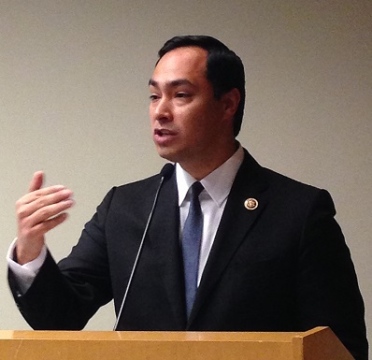Is the Caribbean Community in Danger of Collapsing?
What are Caricom’s greatest achievements? Could closer integration benefit the region and, if so, what steps would have to be taken to achieve it?
As a legacy of the late Prime Minister Shinzo Abe’s transformative foreign policy, “Juntos!”, Japan’s engagement with the Latin American and Caribbean (LAC) region has intensified over the past decade. Guided by the three principles of the 2014 Juntos policy—progress together (“progredir juntos”), lead together (“liderar juntos”), and inspire together (“inspirar juntos”)—companies and government agencies are pursuing opportunities in a wider range of economic sectors and also in support of some of the region’s wide-ranging development objectives, as noted in a recent Inter-American Dialogue Q&A with representatives of the Japan Association of Latin America and the Caribbean (JALAC).
Although Japan has sought to expand its economic engagement with LAC, activity to date has largely focused in Mexico and South America. South America is a critical source of raw materials, agricultural goods, and intermediate goods for Japan, and accounts for the bulk of Japan’s average US$58 billion per year in trade with the region. And in Mexico and elsewhere, Japan has for many years sought to integrate local industry into its global value chains through targeted investment and technical cooperation. In Mexico, in addition to extensive direct investment by Japanese auto manufacturers, the Japan International Cooperation Agency (JICA) has also worked to develop technical capacity in Mexico’s manufacturing hubs through training and other programs.
Though never a primary focus of overall Japanese engagement with the LAC region, Central America and the Caribbean are nevertheless receiving more attention from Japan, whether at the policy level or among Japan’s private sector, as noted by participants in an October 2022 event co-hosted by the Inter-American Dialogue and JALAC. They pointed to the 2021 visit of then-Foreign Minister Toshimitsu Motegi to Guatemala, Panama, and Jamaica, which coincided with the Fourth Japan-SICA Foreign Ministers’ Meeting and the Seventh Japan-CARICOM Ministerial-level conference, as well as other recent vice-ministerial visits across the region. Ambassador Maki Kobayashi, assistant minister and director general of the Latin America and Caribbean Affairs Bureau of Japan’s Ministry of Foreign Affairs, also noted Japan’s interest in “reinforcing” its diplomatic and economic efforts in Central America and the Caribbean during the October event. Specifically, Kobayashi emphasized Japan’s interest in partnering with the region to address the “indispensable” need for green transformations, greater access to renewable energy sources, and fortifying international environmental standards.
Furthermore, Japan is collaborating more closely with multilateral institutions, such as SICA, CARICOM, and the IDB, while also exploring potential opportunities for increased cooperation with the Caribbean Development Bank (CDB), especially in support of climate related initiatives. According to Kobayashi, Japan has often sought to engage with partner nations on development cooperation regardless of their income designation, instead focusing on a country's needs.
Bolstering Ties to Central America and the Caribbean
Although Japan’s commercial activity is more limited in Central America and the Caribbean than elsewhere in LAC, JICA has maintained a long-standing and prominent record in these regions. JICA programming in Central America and the Caribbean has supported technical cooperation, citizen participation, public private partnership development, disaster relief, grants, and loans and investments over the course of many years, according to Kota Sakaguchi, director of JICA’s Central America and Caribbean Division. During the October 2022 Inter-American Dialogue and JALAC event, Sakaguchi noted that JICA is currently active in 23 Central American and Caribbean countries, had 60 technical cooperation activities in place in Central America and the Caribbean as of 2021, and had approved more than US$350 million in loans and ¥3.98 billion (US$28 million) in grant aid. JICA also maintains partnerships with the Central American Integration System (SICA) and CARICOM, including a joint JICA-CARICOM project to introduce renewable energy and energy conservation systems and JICA-SICA activities focused on climate change countermeasures, development of a regional logistics master plan, conservation of biodiversity, agricultural development, gender mainstreaming, and promoting South-South and triangular cooperation.
Recent examples of JICA’s work in these regions include the “Project for the improvement of mathematics teaching in primary and secondary education” (ESMATE) in El Salvador, which was implemented between 2015 and 2019, with a second phase now underway. This initiative has sought to provide technical assistance and expertise to improve the quality of education and educational materials, teacher training, and capacity development in that country. A project encouraging the sustainable management of coastal fisheries is also underway in CARICOM countries, including Antigua and Barbuda, Dominica, Grenada, St. Kitts and Nevis, St. Lucia, and St. Vincent and the Grenadines.
In addition to JICA’s activities, participants in the October 2022 meeting also noted ample opportunity for enhanced Japanese private sector engagement with these regions. Some noted that global disruptions in the supply of goods to North America have made destinations such as Central America and the Caribbean more attractive to would-be Japanese investors. As Ambassador Akira Yamada, special assistant to the Japanese Minister of Foreign Affairs and former Japanese ambassador to Brazil and Mexico noted, “when Japanese firms consider investing in [Central American and Caribbean countries], they will take into account the US market and supply chain.”
Already, some Japanese companies have established a substantial and growing presence in the region, often with financial support from JICA or the Japan Bank for International Cooperation (JBIC). Nissha Medical Technologies, a medical technologies company, established flagship facilities in San Pedro, Dominican Republic in 2015, and now employs almost 500 Dominican workers. Jonathon Casey, chief integration officer at Nissha Medical Technologies, who was also present at the October 2022 meeting, noted that access to highly skilled labor was a major driver of the company’s investment in the Caribbean, in addition to the Dominican Republic’s proximity to North American markets.
High-tech automotive components producer, Yazaki North America, maintains a presence in Guatemala, El Salvador, and Nicaragua. More than a fourth of the company’s employees in North and Central America are based in these three countries. Itaru Motobayashi, executive vice president at Yazaki North America, expects Yazaki to continue expanding its Central American operations, referencing an announcement in June this year of a pilot project factory in Guatemala, which will be the country’s first automotive technology manufacturing site. This would amount to a US$10 million investment from Yazaki, creating an estimated 1,000 new jobs in Guatemala. Motobayashi also mentioned plans to invest another US$110 million by the end of 2026.
Joint partnerships with the US may also bolster Japanese and US engagement with Central America and the Caribbean. Mark Lopes, chief operating officer at Partnership for Central America, noted during the event that Japanese private firms can be important partners in providing finance for Partnership initiatives, including in the areas of sustainable agriculture and disaster risk management. Lopes also noted already-productive cooperation with Yazaki North America in support of Partnership for Central America initiatives. Additionally, JICA’s Kota Sakaguchi described his institution’s partnerships with USAID to address development issues and the root causes of irregular migration from Central America, including unemployment and employment shortages, security issues, and vulnerability to natural disasters. To date, JICA has implemented more than 45 projects to help address root causes of irregular migration.
Despite growing evidence of Japanese private sector interest in Central America and the Caribbean, new activity may very well be limited by those factors that have prevented other international companies from engaging more extensively to date. Political and economic conditions in parts of Central America and the Caribbean have grown increasingly tenuous as countries grapple with humanitarian and migration crises and insecurity, among other difficulties. The relatively high cost of energy in these regions is another determinant of foreign investment. Nine Caribbean countries generate more than 80 percent of their electricity using imported fuels, with five nations importing 90 percent of their energy needs. Like many other international companies, Japanese firms weigh these and other factors when determining where to invest. For many, South America remains a more sought-after destination, but there, too, some have encountered political and economic headwinds.
The Way Ahead
Countries in Central America and the Caribbean face many challenges, especially as they continue to recover from the economic, political, and social effects of the COVID-19 pandemic, and attempt to fortify their economies against the potential oncoming global recession. In 2020, economic activity contracted in Central America and the Caribbean by 7.5 percent and 9.9 percent, respectively. The growth forecasts for the entire Latin America and Caribbean region are expected to decline from 3 percent this year to 1.6 percent and 2.3 percent in 2023 and 2024. However, these challenges the regions are facing also present opportunities for enhanced Japanese cooperation in support of pressing development objectives. Indeed, JICA’s work in Central America and the Caribbean is largely aimed at addressing the effects of climate change, development finance, digital connectivity, and other areas of critical import.
Nearly all of the participants in the October 2022 event suggested that Japan will continue to assist Central American and Caribbean nations in their efforts to develop an ambitious and comprehensive green agenda, by fortifying climate resiliency, particularly in the areas of disaster management and disaster relief, climate adaptation and mitigation, and the use of renewable energies. As it has in the past, much of this work is likely to focus on technical exchange, sharing technological and policy solutions that Japan has developed at home, and which may be transferable to these regions. The Enabling a Gender-Responsive Disaster Recovery, Climate and Environmental Resilience in the Caribbean (EnGenDER) program, a United Nations Development Programme (UNDP) project, seeks to build upon and leverage findings from the Japan-Caribbean Climate Change Partnership to promote understanding of the role of gender in climate resilience and disaster management planning.
Japan is also well positioned to continue cooperating with the region on food security, according to Dina Lopez Melendez, South-South cooperation program officer in the Latin American and the Caribbean Regional Office of the United Nations Food and Agriculture Organization (FAO). Japan has partnered with FAO on these issues and would be well-positioned to continue collaborating on new projects across Central America and the Caribbean, Lopez Melendez noted. Ayesha Constable, the former national coordinator of the Japan-Caribbean Climate Change Partnership, noted that Japan also has an opportunity to assist in the process of “upscaling technologies [in the Caribbean] that can support agricultural development, particularly for rural development and the benefit of women in rural communities.” Farmers from Caribbean nations have previously participated in study tours to Japan to learn and bring back sustainable agricultural practices. Assistance in the development of climate resilient plant varieties and technologies, or in support of the blue economy and fisheries, would also be critical, Constable added.
There is additionally much need for enhanced cooperation in project finance, panelists noted. JBIC and JICA have provided finance for development-oriented projects in Central America and the Caribbean, and work closely with Japanese companies to support investment in these and other regions. Participants also suggested that Japan has a central role to play in helping to reform funding eligibility criteria at the Inter-American Development Bank (IDB) and other multilateral and regional financial institutions. This will be especially critical as Central American and Caribbean countries seek finance to improve climate resilience and reduce environmental degradation.
Finally, Japan is a critical partner as Central America and the Caribbean look to develop digital solutions. As Keiji Inoue, senior economic affairs officer in the International Trade and Integration Division of the Economic Commission for Latin America and the Caribbean (ECLAC), noted during a May 2022 event on the topic, the diversification of trade with the LAC region, investments in support of interregional trade, and a focus on supporting promising sectors such as pharmaceuticals, medical equipment, ICT services, and e-commerce, should be a primary objective for Japan and the region’s other economic partners.
Whether in Central America and the Caribbean or elsewhere in LAC, advancing proof of concept investments in LAC will help to ensure the competitiveness of Japanese activity in the region, as participants noted during an April 2020 event on the topic, again organized by the Inter-American Dialogue and JALAC. Everis, a subsidiary of technology firm NTT, has sought to showcase its “smart city in a box” concept in Chile and Colombia, in collaboration with Microsoft and the IDB, for instance. And the e-Kakashi project, introduced by Softbank group PS Solutions and supported by IDBLab and the Ministry of Internal Affairs and Communications of Japan, has aimed to maximize efficiency in the use of natural resources for agricultural production.
What are Caricom’s greatest achievements? Could closer integration benefit the region and, if so, what steps would have to be taken to achieve it?
What areas and economic sectors present the biggest opportunities for India and countries in the Western Hemisphere?
After decades of engagement with Latin America, Japan is looking to deepen and expand relations.
 Flickr | CC BY-SA 2.0
Flickr | CC BY-SA 2.0

 Video
Video